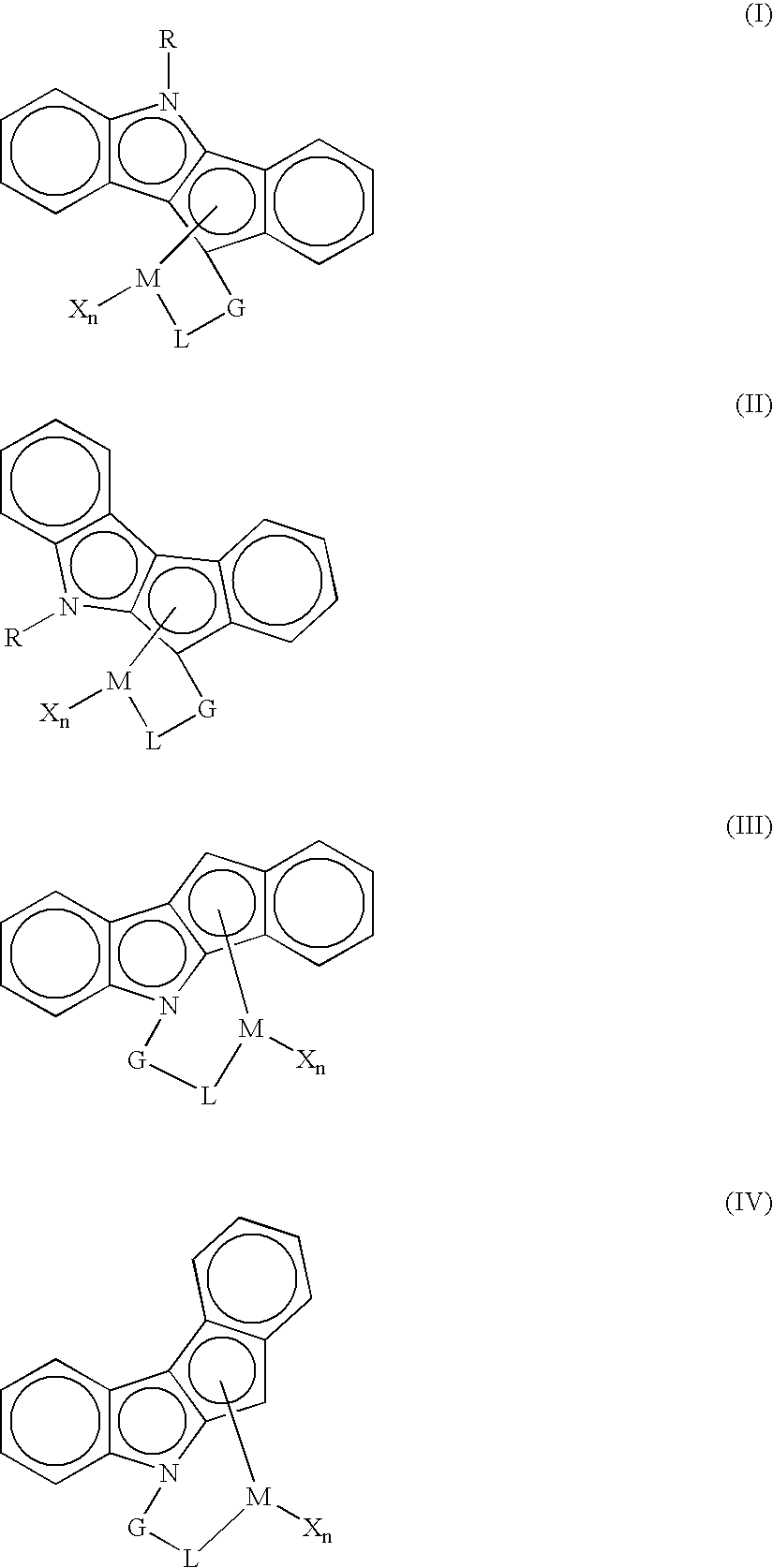Polymer bound single-site catalysts
a single-site catalyst and polymer technology, applied in catalyst activation/preparation, chemical/physical processes, bulk chemical production, etc., can solve the problems of poor catalytic activity, low polymer bulk density, and many challenges of supporting single-site catalysts, and achieve high activity, not easy to dissolve, and great capacity
- Summary
- Abstract
- Description
- Claims
- Application Information
AI Technical Summary
Benefits of technology
Problems solved by technology
Method used
Image
Examples
example 1
Catalyst Comprising Dimethylsilyl-Bridged 2-Methyl Indeno[2,1-b]Indolyl Cyclopentadienyl Zirconium Dichloride, MAO and SAA-103
Catalyst Preparation
[0032]In an inert atmosphere glove box, 1.57 g of SAA-103 (product of Lyondell Chemical Company, OH#: 125 mg KOH / g, Mw: 8,400, Mn: 3,200, Tg: 78° C.) is dissolved in 8 mL of toluene. MAO (product of Albemarle Corporation, 1.26 mL, 30 wt % in toluene) is slowly added into the SAA solution at 25° C. with agitation. The solution viscosity increases as MAO is added. The reaction continues at 25° C. for an hour after MAO addition.
[0033]Dimethylsilyl-bridged 2-methylindeno[2,1-b]indolyl cyclopentadienyl zirconium dichloride (26.8 mg) is mixed with 1.4 mL MAO (30 wt % toluene solution) to form a red solution. The resulting solution is then added to the above SAA-MAO mixture at 25° C. with agitation. The mixture is stirred for an additional 30 minutes and then dried by vacuum (about 28.5 inches mercury) at 25° C. for about 2 hours. About 2.7 g of ...
example 2
Catalyst Comprising Dimethylsilyl-Bridged 2-Methylindeno[2,1-b]Indolyl Cyclopentadienyl Zirconium Dichloride, MAO and SAA-100
[0035]The general procedure of Example 1 is repeated, but SAA-100 (product of Lyondell Chemical, OH#: 210 mg KOH / g, Mw: 3,000, Mn: 1,500, Tg: 62° C.) is used. The resulting polymer (94.8 g) has Mw: 107,820, Mw / Mn: 2.7, and density: 0.908 g / cc. The catalyst activity is 3,450 kg of polymer per g of metal per hour.
example 3
Catalyst Comprising Dimethylsilyl-Bridged 2-Methylindeno[2,1-b]Indolyl Cyclopentadienyl Zirconium Dichloride, MAO and SAA-105
[0036]The general procedure of Example 1 is repeated, but SAA-105 (an experimental product of Lyondell Chemical, OH#: 64 mg KOH / g, Mw: 4,400, Mn: 1,800, Tg: 66° C.) is used. The resulting polymer (67.9 g) has Mw: 112,280, Mw / Mn: 2.7, and density: 0.910 g / cc. The catalyst activity is 2,600 kg of polymer per g of metal per hour.
PUM
| Property | Measurement | Unit |
|---|---|---|
| pressure | aaaaa | aaaaa |
| pressure | aaaaa | aaaaa |
| pressure | aaaaa | aaaaa |
Abstract
Description
Claims
Application Information
 Login to View More
Login to View More - R&D
- Intellectual Property
- Life Sciences
- Materials
- Tech Scout
- Unparalleled Data Quality
- Higher Quality Content
- 60% Fewer Hallucinations
Browse by: Latest US Patents, China's latest patents, Technical Efficacy Thesaurus, Application Domain, Technology Topic, Popular Technical Reports.
© 2025 PatSnap. All rights reserved.Legal|Privacy policy|Modern Slavery Act Transparency Statement|Sitemap|About US| Contact US: help@patsnap.com

